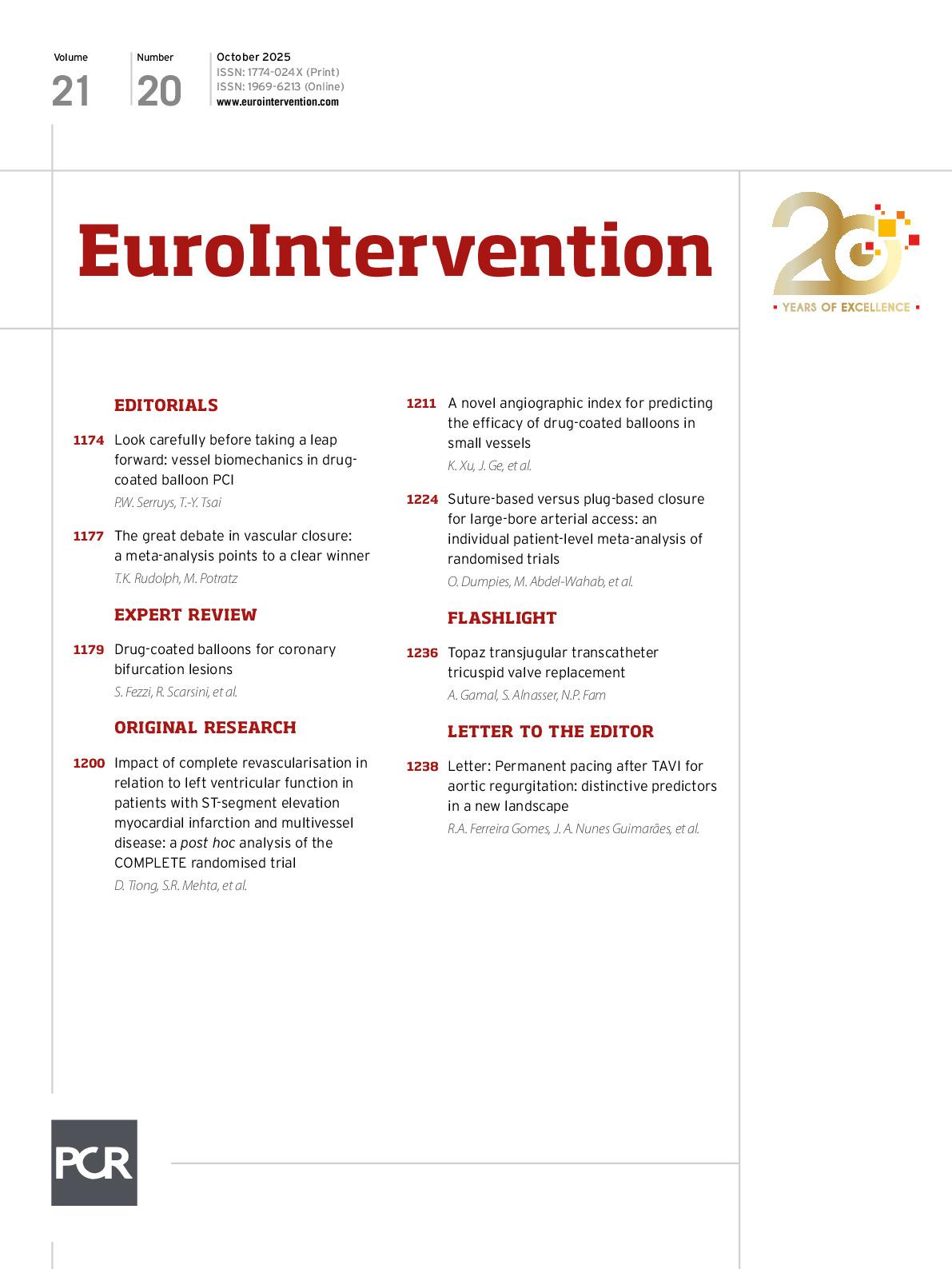With PCR London Valves just around the corner, stay on top of the latest research with EuroIntervention.
DCB treatment for coronary bifurcation lesions
Simone Fezzi, Roberto Scarsini and colleagues review the role of drug-coated balloons (DCBs) in the management of coronary bifurcation lesions, with a particular focus on side branch treatment within a provisional stenting approach. The authors discuss the currently available strategies, including DCB-only and hybrid options, as well as optimal lesion preparation, specific clinical subsets, and complication reduction followed by a comprehensive guide to the existing trials and registries on DCBs.
Complete revascularisation and LVEF in STEMI
In a post hoc analysis of the COMPLETE trial, Denise Tiong, Shamir R. Mehta and colleagues compare the outcomes of complete versus culprit-only revascularisation, stratified by baseline left ventricular ejection fraction (LVEF), in a population of ST-segment elevation myocardial infarction and multivessel disease patients. Complete revascularisation was found to be beneficial across all LVEF subgroups, and the authors underline the importance of maintaining this approach as the standard of care.
Radial wall strain and DCBs
Does plaque composition impact the efficacy of DCB treatment? Ke Xu, Junbo Ge and colleagues test this query by examining the predictive value of angiography-derived radial wall strain on the angiographic and clinical outcomes of DCB treatment in patients with de novo small vessel disease.
ProGlide vs MANTA
Oliver Dumpies, Mohamed Abdel-Wahab and colleagues evaluate the safety and efficacy of plug- versus suture-based large-bore vascular closure devices in a patient-level meta-analysis of randomised trials using the MANTA and ProGlide devices. Suture-based closure had significantly lower rates of access site-related vascular complications and bleeding, but, as the femoral artery diameter increased, the outcomes of plug-based techniques improved. In an accompanying editorial, Tanja K. Rudolph and Max Potratz discuss the future role of plug-based closure devices.

